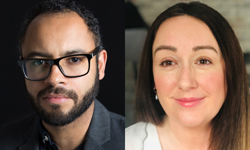
Question 1: Your step mother shares a shocking picture of a thug strangling a kitten with threats against the culprit. But an image search quickly reveals it to be a staged picture library image from 30 years ago. Do you:
a) Share it again
b) Close the image and move on
c) Let her know her mistake and risk being thought one step down from a kitty killer.
Question 2: Your kid’s best friend’s father shares a video railing against MMR and calls on the school’s parents to refuse the vaccine. Do you:
a) Agree to the boycott
b) Pretend you didn’t see it
c) Explain why he’s wrong, the real science behind it, the NHS guidance and expect to have a row at the school gates.
Question 3: Your cousin is sharing the ‘news’ that the earth is flat, the moon landings were a hoax and 911 was a CIA plot. Do You:
a) Repost!
b) Turn a blind eye
c) Set out to debunk them all, starting with details of the Apollo space mission and ending with Occam’s razor, while knowing there are many things you’d much rather be doing with the time.
If you answered with c)’s, then congratulations, you are the enemy of fake news and if you answered a)’s, you are a friend but probably won’t care. But… if you answered b)’s, which is what most of us I think would answer, then you too are also a friend of fake news, because there is complicity in inaction.
Fake news is created by the unscrupulous, but it is spread by friends and family. It is closer to home than we like to think and that’s what makes it so powerful and dangerous.
Fake news is created by the unscrupulous, but it is spread by friends and family.
A publishing free-for-all
The concept that anyone anywhere would be able to publish anything they liked, instantly to a worldwide audience once promised to be a great democratiser – the ultimate tool for free speech that would know no borders and bring peoples together. And, yes, the internet has done some of that. But now it feels more like a threat to democracy. Truth wants to be free, was the mantra. In too many places, it’s struggling to get out.
Fake news is now infuriating the law makers. Governments are making ever louder noises about regulations and sanctions. The platform providers were slow to respond. Public authorities cannot quite understand how companies with such impressive technology, who reputedly know all our deepest thoughts and desires, even before we know them ourselves, seem so ineffectual at stopping online abuse, threats, crime and lies. One reason is that the platforms’ algorithms may not be quite as clever as their marketing hype makes them out to be.
Another is that fake news is not so easy for algorithms to distinguish from real news.
It’s made harder by those who cry wolf. Some complain about anything they just happen to disagree with in order to make a point. Editors receive demands for factual “corrections” about global warming from deniers, for example, or from creationists about evolution.
Many people don’t even read what they share, let alone assess its reliability. Social media managers can see this from their data. People share to identify with others. The facts of the story have become less important than the sentiment it conveys.
There are plenty of projects underway to tackle fake news, from public research, journalism institutes and most of all, the technology companies themselves. Technology has a habit of finding a way through but in this case, it has got off to a slow start. YouTube ran information boxes on 9/11 next to videos of the Notre Dame fire, fuelling speculation in social media that the fire too was an act of terrorism.
Fake news is nothing new. Journalists can take some of the blame and the profession finds itself somewhere below politicians and estate agents in terms of public trust. But the tabloids were the real villains. Broadcasters, along with the local and trade press, were viewed more favourably. It was usually quite obvious who the guilty ones were.
Fake news is just more shameless than ever before, more readily believed, more easily shared, based on even less truth and much faster to spread. Magazines look trustworthy and reliable in comparison and we should turn that to our advantage. There will always be sections of the public who choose to believe the far-fetched conspiracy stories but I think many people are starting to doubt the reliability of much of what they read in the digital wild west.
Technology will eventually help identify suspicious stories. Education will help the public question what they read. But for now, it’s up to good old fashioned thorough journalism, fact checking and questioning. We editors have always been proud of what we do and why we do it. Now is the time to remind the public.
Many people don’t even read what they share, let alone assess its reliability.












